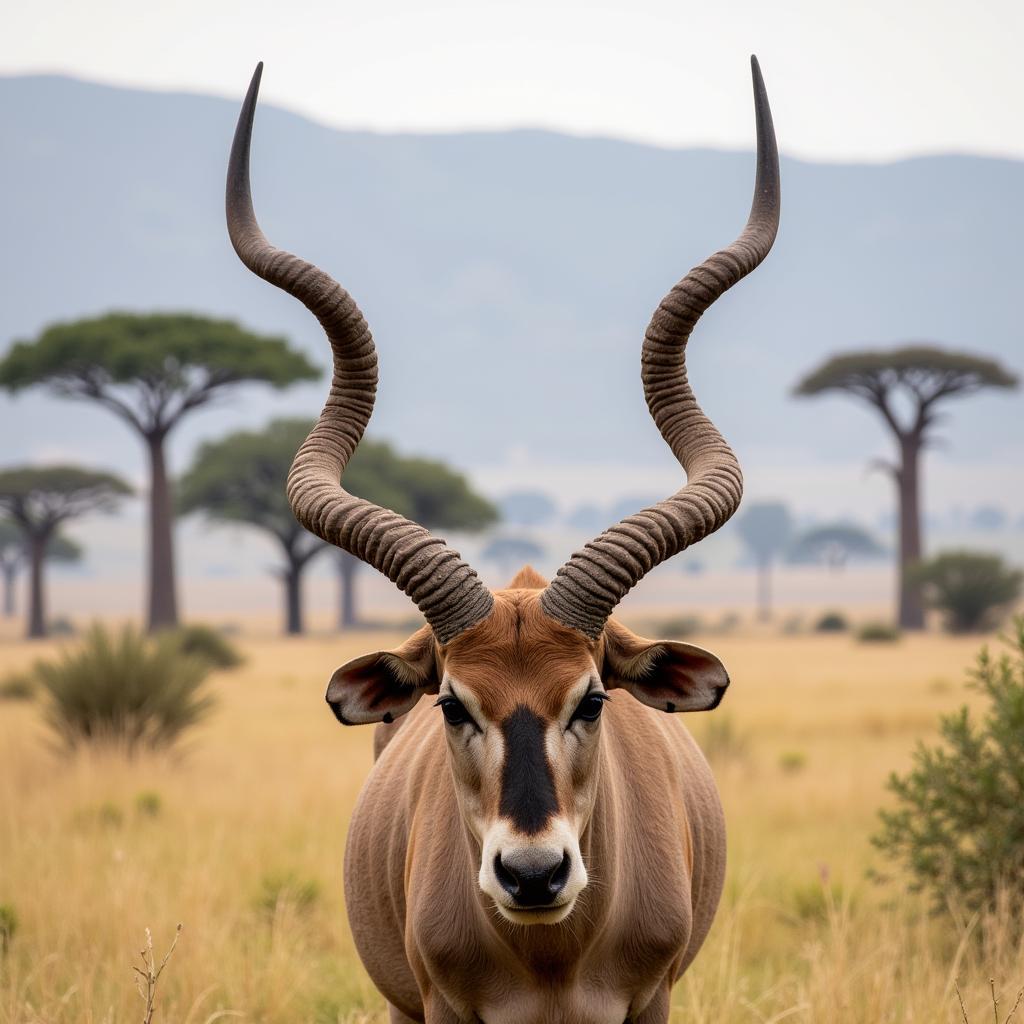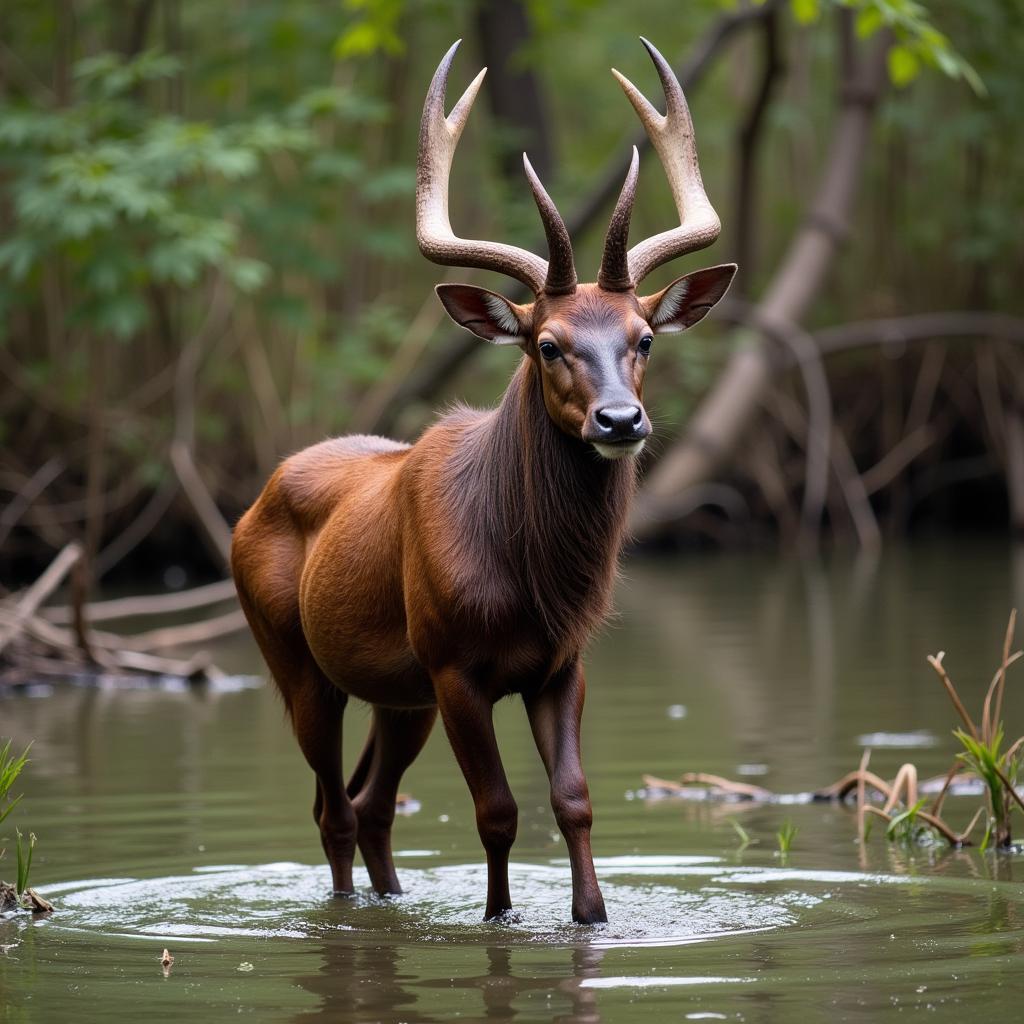Majestic African Animal with Curved Horns
Africa, a land of breathtaking landscapes and diverse wildlife, is home to a fascinating array of animals with curved horns. These majestic creatures, often symbols of strength and resilience, play a vital role in the intricate ecosystems they inhabit. From the vast savannas to the dense woodlands, these horned animals captivate with their unique beauty and intriguing behaviors. This article delves into the world of African animals with curved horns, exploring their diverse species, adaptations, and the challenges they face in a changing world. After the introduction, we will explore some specific examples of African animals with curved horns.
The African continent boasts a diverse range of animals sporting magnificent curved horns. These horns, varying in shape, size, and curvature, serve various purposes, from defense against predators to establishing dominance within their social groups. Understanding the diverse species of African animals with curved horns provides a glimpse into the intricate web of life that thrives on this continent. Let’s delve into the lives of some of these remarkable creatures. The variety is truly astounding, and learning about them is a journey into the heart of African wildlife. For those interested in a specific type of antelope, the African Antelope Nyala is a fascinating creature. african antelope nyala
The Eland: A Gentle Giant with Spiraled Horns
The eland, the largest antelope species in Africa, stands as a testament to the magnificence of curved horns. Both males and females possess tightly spiraled horns that can reach impressive lengths. These horns are not just for show; they play a crucial role in establishing dominance during mating season and defending against predators like lions and hyenas. Elands are primarily grazers, roaming the savannas in search of grasses and foliage. Their size and strength often deter predators, but their gentle nature makes them a target for human hunting.
 Eland showcasing its impressive spiraled horns
Eland showcasing its impressive spiraled horns
The Kudu: Master of the Woodlands with Majestic Horns
The greater kudu, an iconic symbol of African wildlife, is renowned for its striking, corkscrew-like horns. These magnificent spirals can grow up to six feet long in males, making them one of the most impressive horned animals on the continent. The kudu’s horns are essential for defense against predators like leopards and wild dogs, as well as for establishing dominance within their social hierarchy. Their habitat preference for dense woodlands and thickets makes them elusive and challenging to spot. Kudus are browsers, feeding on leaves, fruits, and flowers, and their agility allows them to navigate challenging terrain with ease.
The Sitatunga: A Swamp-Dwelling Antelope with Unique Adaptations
The sitatunga, an elusive antelope adapted for life in swamps and marshes, possesses long, spiraled horns that are slightly curved. These horns, combined with their elongated hooves, help them navigate the treacherous terrain of their watery home. Sitatungas are skilled swimmers, often submerging themselves in water to escape predators. Their specialized diet consists of aquatic vegetation, making them well-suited to their unique environment. You might be interested in learning more about other african animals beginning with n.
 Sitatunga navigating its swampy home with its unique adaptations.
Sitatunga navigating its swampy home with its unique adaptations.
Conservation Concerns for African Animals with Curved Horns
Many African animals with curved horns, including the eland, kudu, and sitatunga, face increasing pressure from habitat loss, poaching, and human encroachment. Conservation efforts are crucial to protect these magnificent creatures and ensure their survival for future generations. These efforts include establishing protected areas, combating illegal wildlife trade, and promoting sustainable land management practices. If you’re curious about other African antelope species, you might want to look into the African Black Antelope.
What are some examples of African animals with curved horns?
Several species, including the eland, kudu, and sitatunga, boast curved horns.
Why are curved horns important for these animals?
Curved horns serve various purposes, from defense and establishing dominance to navigating challenging terrain.
What are the main threats to African animals with curved horns?
Habitat loss, poaching, and human encroachment pose significant threats to these animals.
This article explores the fascinating world of African animals with curved horns. From the majestic eland to the elusive sitatunga, these animals play a vital role in the diverse ecosystems they inhabit. Conservation efforts are crucial to ensuring their survival for future generations. You might also be interested in learning about african deer with twisted horns.
FAQ
- What is the largest African Animal With Curved Horns? The Eland.
- Which African antelope has corkscrew-like horns? The Kudu.
- Which horned animal is adapted for swamp life? The Sitatunga.
- What are the primary threats to these animals? Habitat loss, poaching, and human encroachment.
- Why are conservation efforts important? To protect these species and ensure their survival.
- Where can I find more information on the nyala? Check out this resource: a species of large african antelope crossword clue
- Are there other African animals with unique horn structures? Yes, many other species have fascinating horn adaptations.
For further information, explore other articles on our website related to African wildlife and conservation efforts.
When you need assistance, please contact us by phone: +255768904061, email: [email protected], or visit our address: Mbarali DC Mawindi, Kangaga, Tanzania. Our customer service team is available 24/7.